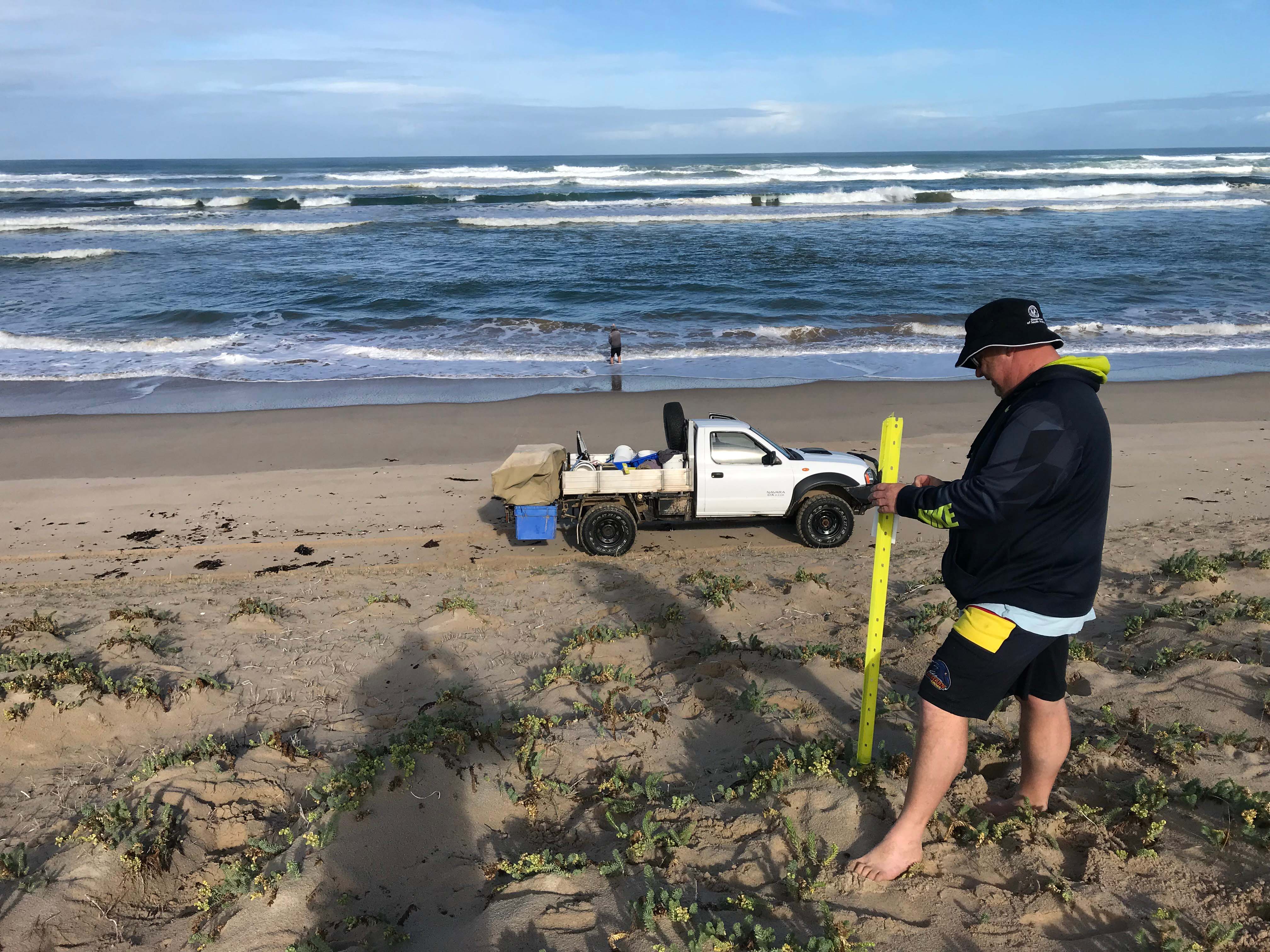Translocating smaller Pipis (Donax deltoides) from overcrowded beds to less populated beaches is helping to improve the profitability of South Australia’s Pipi fishery.
Catch reporting technology is successfully being used to help fishers and researchers collaborate on Pipi translocation trials to help build the value of the fishery and expand the resource.
Deckhand software, approved for regulatory reporting use across South Australia, was modified for FRDC-funded trials (2017-151). This has allowed independent fishers taking part in the trial to collectively record their catch, catch locations, and quantities of Pipis relocated to designated “drop zones”.
It has also allowed researchers from the South Australian Research and Development Institute (SARDI) working on the project, to advise fishers of new drop zones as each translocation site reached its estimated Pipi carrying capacity.
Principal investigator of the project, managing director at Goolwa PipiCo, Tom Robinson, says the technology has been key to the successful operation of the trials, which have shown promising results.
Partners in the project with FRDC, Goolwa PipiCo, SARDI and the Department of Primary Industries and Regions South Australia (PIRSA) with support from consultancy Nutrisea and Real Time Data, which produces the Deckhand - a catch and regulatory reporting software.
South Australia’s Pipi fishery stretches along 70 kilometres of beach east of Adelaide, with strong recruitment in many Pipi beds along the Younghusband Peninsula in recent years.

That’s a positive sign for the health and future of the fishery says Tom. However, it has created challenges for fishers with an increase in undersize and smaller legal, but low-value Pipis. At peak recruit times he estimates more than 70 per cent of the catch was being graded off and returned to the water, with only 10% of the catch a marketable size.
As fishers continued to harvest densely populated beds over several weeks, they were also concerned that they were recatching the same smaller Pipis more than once, with the constant handling increasing the risk of damaging the animals.
Working with SARDI and PIRSA, Goolwa PipiCo trialled moving some of the smaller Pipis to nearby sites within the state’s designated harvest area.
The Goolwa PipiCo work hand in hand with the Ngarrindjeri people who have been on country for over 19,000 years.
In the first year of the project, fishing crews translocated about 120 tonnes of undersized Pipis. Just over half of this was translocated to within 500 metres of the original bed being fished, with the remainder translocated to various less populated drop zones along the beach.
By recovering tagged Pipis at different intervals, researchers found the survival of translocated Pipis at all sites was good and smaller Pipis grew more quickly to a marketable size. The best growth rates were recorded in the smallest-sized Pipis translocated within their original bed.
Tom says the Pipis translocated into drop zones were moved closer to the fishers’ home base at Goolwa, which will mean less travel for fishers when the time comes to harvest them, with reduced fuel use and less wear and tear on vehicles. It has also reduced the likelihood of recatching and releasing the same Pipis multiple times.
Economic assessment
While the research project has concluded, the translocation initiative is expected to continue until 2025, to assess whether these efforts will increase the productivity of the fishery in the long term and increase the Total Allowable Commercial Catch (TACC) for fishers.
Financial modelling as part of the project suggests that potential TACC increases could add more than $250,000 to the value of the fishery, depending on the size of the increase.
Otherwise, cost benefits would be limited to improved catch rates of more marketable Pipis and reductions in fishers’ costs.
FRDC Senior Research Portfolio Manager Dr Chris Izzo says the project represents a good opportunity to test whether an already sustainable fishery can increase its value by improving the growth rates of existing Pipi beds, or increasing the Pipi resources overall, or both.
“It’s an innovative fishery, where they’re trying to optimise the value of the catch fishers are permitted to take, and they already fish for sizes for different markets. This project represents an alternative approach to building the value of the fishery,” Chris says.
FRDC Projects
FRDC Project 2017-151 (Innovative Pipi harvesting based on real time biological and economic data)





